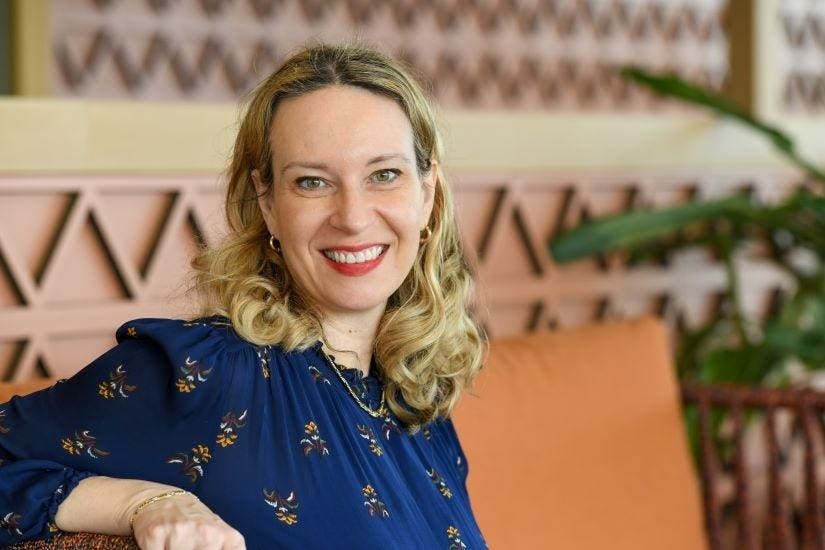If you ever doubted the critical role lawyers play in making the world of impact work, consider the case of Gavi, the Vaccine Alliance.
At the beginning of the pandemic, Gavi, a public-private global health partnership focused on increasing immunizations in low-income counties, faced a daunting task: leading the procurement and delivery of a Covid-19 vaccine workstream as part of a WHO project. Specifically, it had to come up with a plan for making sure that, when vaccines became available, they would be distributed fairly and equitably. That meant avoiding the potential for the medicine to be distributed only to a small number of wealthy countries able to negotiate their own contracts with providers.
ADVERTISEMENT
“We needed to find a way to be sure the poor countries we represent also got those vaccines,” says Jelena Madir, general counsel of Gavi and the lead attorney on the project.
Their solution was to set up the Covax program for the production and distribution of Covid-19 vaccines, with Gavi as the legal administrator. An undertaking that was both highly complex and of urgent importance, Gavi ultimately delivered almost 2 billion doses to 150 countries, thanks to a team of internal and external lawyers. “Lawyers got involved at the very inception by guiding business teams through a maze of legal risks inherent in the complex structure and proposing appropriate (solutions),” says Madir.
The organization also just won the 2023 Grunin Prize for Law and Social Entrepreneurship. Administered by the Grunin Center for Law and Social Entrepreneurship at the NYU School of Law, it recognizes lawyers’ participation in the ways in which business is increasingly advancing the goals of sustainability and human development.
ADVERTISEMENT
The Financing Model
The basic model was that vaccines for low-and-lower-income countries—92 in all—would be financed by donor funding. But, to ensure as much demand as possible, 73 self-financing high and upper-middle income countries, from Bolivia to Canada, also joined, paying for their own doses. While no one knew at the time when a vaccine would become available, Gavi did realize that high- income countries would compete for doses. By including them in the agreement, “We wanted to make sure they had some skin the game,” says Madir.
Multiple Tricky Challenges
At the same time, Gavi needed to form agreements with manufacturers to supply vaccines. That was tricky. “Manufacturers are not keen to agree to scale up their production while they’re still developing vaccines,” says Madir. To avoid potential delays and foot-dragging, Madir and her colleagues formed agreements in which they guaranteed the purchase of a certain number of doses.
There also was the matter of Gavi’s risky position. As the intermediary, it could be on the hook if any countries didn’t pay. (As it turned out, several ended up defaulting, according to Madir). With that in mind, the first approach was to ask participating countries for guarantees from commercial or multi-lateral development banks. But that would have taken a long time and the deadline was December 2020. So, instead, Gavi accepted guarantees from countries’ Ministries of Finance and, finally, got default insurance from a commercial insurer.
ADVERTISEMENT
The biggest challenge, according to Madir, involved the negotiation of supplies. Getting firm supply schedules from manufacturers was tough, since they didn’t know whether or when they would have a successful vaccine. Also there was a problem related to negotiating the lowest price possible. It meant manufacturers wouldn’t prioritize deliveries to the poorer countries paying those low prices.
The solution: slot swapping. If a high-income country was ahead in the line because of its buying power, but didn’t need that many doses, it would take a step back and let Covax assume that spot. They also persuaded wealthy countries—including the U.S., which wasn’t part of Covax—to donate excess doses.
A Template
As you might expect, a lot of legal acumen went into making it all happen. That expertise was supplied by Gavi’s in-house legal team—a team of four that grew to 12—and outside counsel. Creating the facility involved negotiating agreements with over 150 governments, along with separate contracts with 10 manufacturers and insurance agreements, among many other complex moves.
ADVERTISEMENT
Ultimately, the Covax facility has the potential to be applied to other crises. “It’s a template for a global risk sharing arrangement—the basis on which the world prepares for the next pandemic,” says Madir.
Read the full article here










